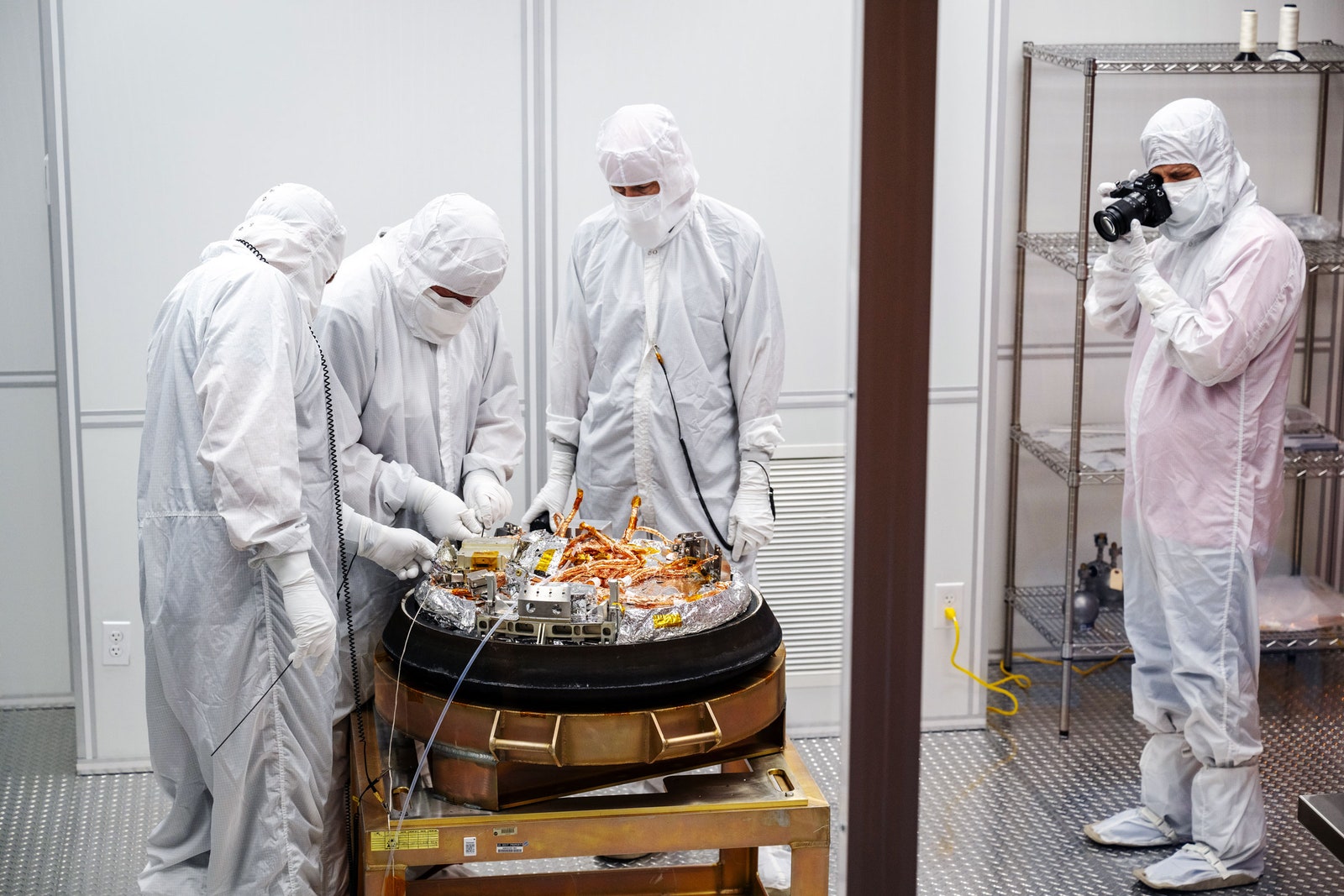The NASA recovery team began by taking samples of the desert ground and atmosphere where the capsule landed. Then they gingerly loaded it onto a helicopter and transported it to a temporary clean room in a hangar on the training range. In the clean room, personnel wore bunny suits covering their clothing, shoes, and hair to ensure that fabric fibers, hair, and skin cells didn’t contaminate the container. They opened the top of the capsule and conducted a nitrogen purge, pumping in gas to make sure that contaminants like oxygen, moisture, and earthly bacteria don’t somehow make their way inside.
On Monday, they flew the partially opened capsule on a Boeing transport aircraft to a clean room at Johnson Space Center’s curation facility. There they’ll continue taking apart the capsule over the next few days. The interior canister will be moved to a “glovebox,” a sealed container filled with hydrogen that technicians can access only by sticking their gloved hands through a partition. They will also remove the collector head of the robotic arm that snagged the sample and place it in another dedicated glovebox.
On October 11, NASA plans a public reveal of what’s inside the canister. While it will take some time to do in-depth studies of that main sample, the reveal may include Haenecour’s team’s preliminary findings about dust particles on the canister’s exterior. This dust would have attached to the container in 2020, when the OSIRIS-REx spacecraft grabbed the sample—and nearly spilled it into space.
Curation teams process the sample return capsule from NASA’s OSIRIS-REx mission in a cleanroom.Photograph: Keegan Barber/NASA
Once the canister is finally opened, the curatorial team at Johnson plans to divvy up the valuable rocks among some 200 scientists worldwide. “These samples are an amazing treasure trove for generations of scientists,” said Eileen Stansbury, a chief scientist at Johnson, during Sunday’s news conference. If all goes well, those samples will last for decades and can be used as new analysis tools are developed. (A half century after the Apollo program, scientists are still doing research using lunar regolith samples, like for a recent study about growing plants on the moon.)
OSIRIS-REx is NASA’s first asteroid sample return, and the capsule is expected to harbor a much larger sample than those brought back by the Japanese space agency’s Hayabusa missions, which visited the asteroids Ryugu and Itokawa.
NASA has more sample-return projects in the works. That includes collaborating with Japan’s MMX mission, which will launch next year to visit the Martian moon Phobos and return a sample in 2029. NASA will also use the Artemis program’s planned lunar landing in 2026 to dig up new moon samples, and the agency intends to bring back regolith from Mars, which is being collected by the Perseverance rover.



